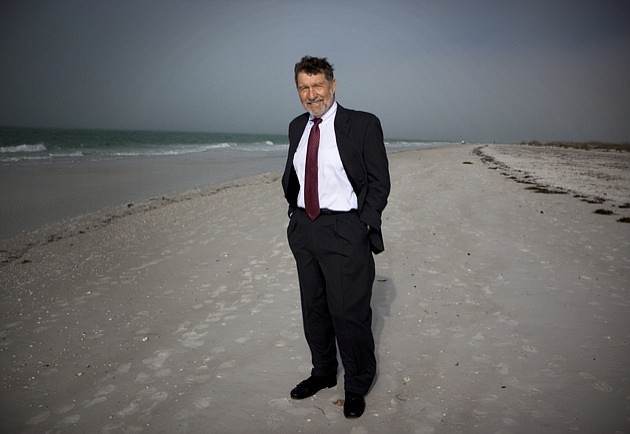- July 26, 2024
-
-
Loading

Loading

None of the oil from BP's Deepwater Horizon rig explosion last year ever reached this part of the Gulf Coast, yet hotels and restaurants here were still affected. Exactly how much they can reasonably expect to recover in monetary damages could be up to guys like Stan Stephenson.
The former college professor and government official is managing principal of Tampa-based Litigation Economics LLC, a national firm that works with lawyers to put a proper value on business losses. While Stephenson and colleagues in California, Connecticut and Texas handle cases ranging from product liability to intellectual property, their focus lately has been BP and beaches.
“We pride ourselves in complex litigation,” says Stephenson, who has a doctorate in economics from Indiana University and served as regional commissioner of the Bureau of Labor Statistics in San Francisco prior to launching Litigation Economics in 2003. “Any particular case can become complex, depending on the facts.”
That's what makes potential claims against BP so complicated: No other prior event can compare, except the 1989 Exxon Valdez tanker spill in Alaska's Prince William Sound, which affected commercial fishing rather than hospitality.
The Gulf Coast hospitality industry was indirectly affected by the massive oil spill largely because of misperceptions that Florida's entire west bank got soiled, based on media images of tar balls washing ashore on the far end of the Panhandle. Although the gushing crude stayed hundreds of miles away months after the April 20 disaster, and despite local resorts posting their own online images of clean beaches, countless vacationers canceled reservations to avoid the risk.
One of the Tampa Bay area's largest resorts, the TradeWinds on St. Pete Beach, submitted a $1.7 million claim to BP that management says was immediately rejected. It could pursue the matter again in court, though Stephenson advises treading carefully since litigation can be expensive and winning isn't guaranteed.
“Sometimes the data isn't always there to support analysis,” says Stephenson, a Sarasota resident. In cases against BP, he says, claimants must gather past and future data, find the disruption and extrapolate the impact over time.
Besides losing summer guests, Gulf Coast lodging may have lost more business because of winter visitors or “snowbirds” who normally would come down but were unsure about current conditions, Stephenson surmises. In order to win such a judgment in court, his firm has to make its calculations defensible as well as understandable, he says.
“You can never get too far ahead of the judge and the jury,” he says, noting that simplifying data can make a huge difference. For example, he once won a case using easels and magnets while the other side had multiple video screens and spreadsheets.
Stephenson, who previously taught economics at Penn State University and the University of Hartford, says he has been involved in at least 350 cases over the last eight years, representing either plaintiffs or defendants, but has only had to testify about 60 of those times while the others settled out of court. While it helps to have several people calculating damages, it's best to let one person do the talking on the stand, he says.
He offers this scenario for a typical restaurant in the BP spill's impact area: If gross sales are off by $100,000 per month, the cost of goods and other variable expenses normally incurred within that lost revenue may measure $80,000, putting initial lost profit at $20,000 each of seven months, for a total of $140,000.
Other expenses incurred due to the spill, such as special advertising or marketing or replacement of broken equipment, could feasibly add tens of thousands more dollars to the claim, he explains. But then the other side may argue some damages as being coverable by insurance or other funds, thereby relieving the oil company of that liability.
“The goal of achieving the most reasonable outcome is best assured by the parties gathering and presenting the best data and evidence they possibly can,” Stephenson says.
BP lawyers expect to receive more than 100,000 proximity claims out of Florida, all the way down to Key West, based on arguments of indirect harm. That could be enough to deplete the $60 billion set aside by the company to settle all claims, unless judges see fit to dismiss some or scale them back.
Kenneth Feinberg, the lawyer administering BP's claim fund, has stated that the way damages are assessed will be a key issue, rather than simply paying the difference in dollars before and after the spill.
“The decision to at least consider proximity claims is the correct one,” Feinberg told The New York Times last October. He added: “If proximity isn't a bar to claims, who knows how many there will be.”